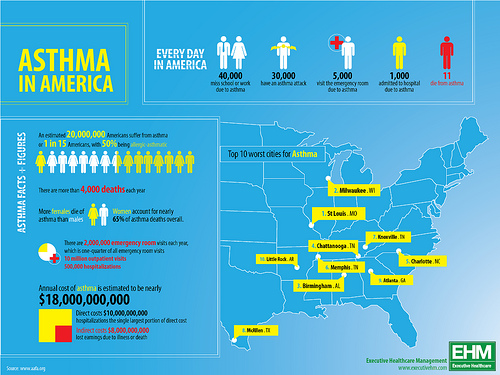4 Ways Healthcare Professionals Can Become the First Choice in Health-Related Information Sources

Healthcare affects, or will someday affect, each and every one of us. As consumers, we live in an extremely fast-paced society where the answers to our questions are at our fingertips with the help of search engines and a wide range of internet sources. Mobile devices even allow us to conduct searches on the go, wherever our busy lives take us. Finding relevant information is easier than ever. However, in a society reliant on easily accessible information, many consumers are bombarded with false information regarding healthcare as a result of illegitimate sites and inaccurate information infiltrating their web browsers.
By improving the way that healthcare practices are marketed, healthcare professionals can get accurate and useful information into the hands of their consumers and limit the number of people who may become paranoid or misinformed based on arbitrary web searches and false content. Improving a patient’s experience with medical based information searches can, in turn, improve the relationship between healthcare professionals and their patients by creating a sense of trust through the exchange of quality content. Below are four simple and realistic solutions that healthcare professionals and marketers can implement to make their sources of health-related information a trustworthy choice for the curious consumer.
1. Make Information Easily Accessible
When consumers seek answers for healthcare questions, they tend to gravitate toward a basic web search composed of their symptoms or concerns. Many times, these types of searches lead them to an abstract information website, or a page as illegitimate as Yahoo Answers. If private practices, hospitals and other treatment centers made information more readily available and easily navigable, clients would be able to find more legitimate answers to their questions. Consumers need the option to rely on their healthcare providers for information rather than outsourcing to places like Google and WebMD for answers. Presenting them with trustworthy content can strengthen their connection to your organization and differentiate you from the pack. On the same note, there are multiple ways to create brand awareness by taking advantages of the web and other media outlets used by consumers.
2. Know your Audience
One way to make information accessible is to know the audience you are targeting. Entrepreneur Magazine has developed a great list for new business owners to consult when trying to find their target market. Healthcare professionals can ask themselves these same questions when looking to design marketing material that will best reach their target audience. Once these questions are answered, relevance becomes the key factor in the way healthcare practices target their audience. Material that is relevant to the patients you are trying to reach is the most successful material. It may even be the number one contributing factor in whether or not a patient chooses your information to not only answer their questions or concerns, but to inform them on other topics about their health. An example of a medical practice that has successfully developed information relevant to their patients is an upscale rehab center called Clarity Way. Clarity Way uses intriguing infographics of former child stars who ended up in rehab to reach their patients. This kind of content creates an engaging connection between the provider and the audience. It’s both fun and relevant, and a little nostalgia goes a long way.
3. Make Information Visually Engaging
The Content Marketing Institute found that the healthcare field is two years behind other industries in their use of digital sources as well as social media to market their services. Healthcare professionals need to stop relying primarily on print sources and embrace the digital age. The industry needs to adapt as a new, more digitally inclined and visually stimulated generation comes to the forefront of healthcare needs.

If healthcare providers want their information to be the first resource their clients consult for answers, the factual, text-based content on their website might need a little spicing up. To accomplish this, healthcare pros can make their information visually engaging by using statistical evidence and multimedia sources to create videos of infographics. For example, creating short videos warning patients of the flu symptoms and infographics that reference the side effects of Type II Diabetes are more effective ways to reach consumers than simply providing a list of symptoms or prevention tools. With the amount of data available to healthcare providers, it is important that they use it to benefit both their practice and consumer by making that information available in a way that is visually stimulating.
By marketing information in a way that is appealing and clear to consumers, healthcare professionals can create a relationship with them, becoming the preferred source of information. Health systems have begun adopting content marketing strategies that encourage patients to reference their sites for information and ultimately, choose them as their healthcare providers. Here are a few that are doing content marketing the right way.
4. Share the Warning Signs of Unreliable Sources
As the web becomes a go-to source for answers to all of our health-related questions, sites containing misleading information begin to crowd our search results. In order to avoid being misled or misdiagnosed by this false information, consumers need to know what characteristics differentiate legitimate sites from those that misinform. The National Institutes of Health developed a list of ideas that may keep Internet users searching for answers to their healthcare questions from falling victim to misleading search results and websites. The guidelines the institute presents are specifically geared towards dietary information, but are applicable to various medical fields. A previous post took a look at a handful of medical providers that use content marketing effectively and are successfully making themselves a source of information for their patients. This list, which identifies a few hospitals and healthcare providers who have begun to use healthcare content marketing the right way, may be a beneficial resource for healthcare providers and professionals looking to better understand realistic ways to make their sites the top choice for answers to their patient’s healthcare questions.
By taking these four steps into consideration when trying to market and reach patients, healthcare professionals can make their information the primary source for answers to healthcare questions or medical concerns. Making sure that individuals have the correct information to ease their minds amidst healthcare needs offers members of the healthcare field a way to create a more efficient and effective healthcare system and win over new clients. Not only will this better inform individuals on their medical concerns, but it will also help establish a sense of trust with healthcare practices and professionals, making them not only the first choice in information, but the first choice in treatment.
Madeline Westfall—Content Creator



